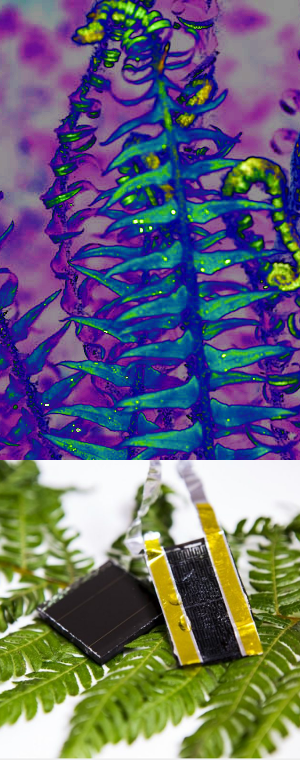Powerful plant shapes tapped
 Australian engineers are working on a new energy storage system based on the design of a leaf.
Australian engineers are working on a new energy storage system based on the design of a leaf.
If it can be scaled up, the new electrode created by RMIT researchers would increase the capacity of existing storage technologies by 3000 per cent.
The new design draws on nature’s own solution to the challenge of filling a space in the most efficient way possible – through intricate self-repeating patterns known as ‘fractals’.
“The leaves of the western swordfern are densely crammed with veins, making them extremely efficient for storing energy and transporting water around the plant,” RMIT's Professor Min Gu said.
“Our electrode is based on these fractal shapes – which are self-replicating, like the mini structures within snowflakes – and we’ve used this naturally-efficient design to improve solar energy storage at a nano level.”
The new electrode is designed to work with supercapacitors, which can charge and discharge power almost instantly compared to conventional batteries.
“Our experiments have shown our prototype can radically increase [supercapacitors’] storage capacity – 30 times more than current capacity limits,” Dr Gu said.
Combined with supercapacitors, the fractal-enabled laser-reduced graphene electrodes can hold the stored charge for longer, with minimal leakage.
Lead author, PhD researcher Litty Thekkekara, said the technology could be combined with solar cells to create a device that both gathers and stores energy.
“We can do that now with existing solar cells but these are bulky and rigid. The real future lies in integrating the prototype with flexible thin film solar – technology that is still in its infancy,” she said.
“Flexible thin film solar could be used almost anywhere you can imagine, from building windows to car panels, smart phones to smart watches. We would no longer need batteries to charge our phones or charging stations for our hybrid cars.”







 Print
Print